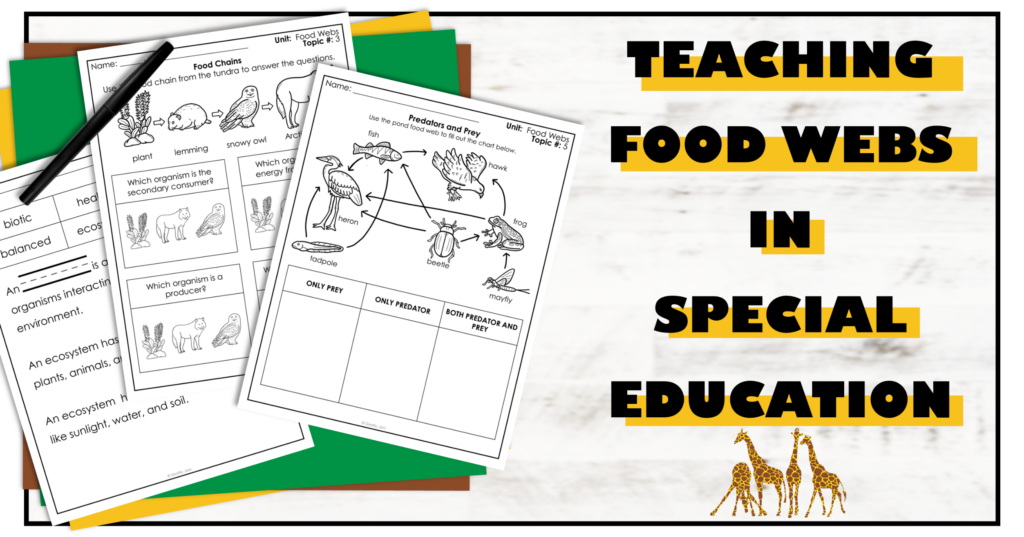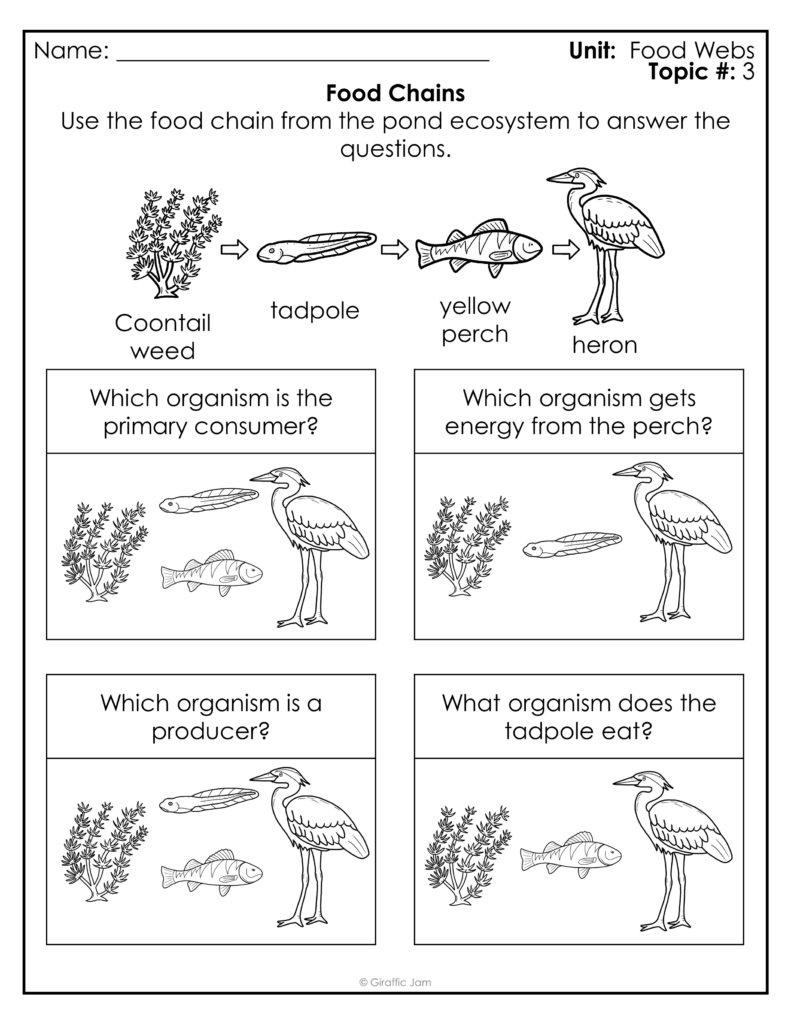
Teaching food webs in a special education classroom can be incredibly rewarding, yet challenging. Food webs illustrate the intricate relationships between different organisms in an ecosystem, showing how energy flows from producers to consumers and decomposers. Simplifying these complex concepts to meet the diverse needs of special education students requires innovative strategies and resources.
Food webs are crucial for understanding the balance of ecosystems. They demonstrate how organisms depend on each other for survival, highlighting the importance of biodiversity. Teaching food webs helps students grasp how energy moves through an ecosystem and the roles various organisms play in maintaining ecological balance. For special education students, mastering this concept fosters a deeper appreciation of nature and environmental stewardship.
This adapted science unit simplifies the concept of food webs by breaking down the material into manageable chunks. This resource provides simplified explanations, visual aids, and hands-on activities tailored to meet the learning needs of special education students. By presenting information in an accessible way, these units ensure that all students can grasp the essentials of food webs, regardless of their learning abilities.
Visual supports are key to making complex scientific concepts more understandable. This resource includes colorful diagrams, charts, and pictures that illustrate food webs clearly. Visuals help students who struggle with text-based learning by providing them with concrete representations of abstract ideas. These aids make it easier for students to visualize the connections between different organisms and the flow of energy in an ecosystem.

I am PASSIONATE about using mature formatting and fonts for my resources designed for older students.
Notice:
Hands-on activities are essential for engaging special education students and reinforcing learning. This resource includes interactive activities such as building food webs with physical objects, role-playing different organisms, and creating food web diagrams. These activities allow students to explore food webs in a tangible way, making learning more dynamic and memorable.
For special education students, building foundational knowledge is critical for understanding more complex concepts like food webs. This resource starts with the basics, explaining key terms and concepts before delving into more detailed aspects of food webs. By laying a solid foundation, it ensures that students are well-prepared to grasp how food webs function and their significance in ecosystems.
Creating an inclusive classroom environment where all students can participate in learning about food webs is essential. The Food Webs Adapted Science Unit offers strategies and materials that cater to diverse learning needs, promoting an inclusive atmosphere. This approach not only benefits special education students but also fosters a sense of community and collaboration among all learners.
Conclusion: Making Teaching Food Webs Accessible
Teaching food webs doesn’t have to be daunting, even in a special education setting. With the right resources and strategies, you can simplify complex concepts and make learning about food webs engaging for all students.